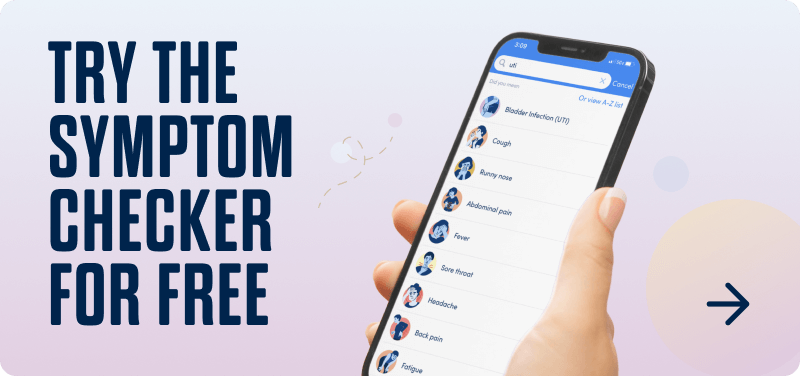If you’ve been to the doctor’s office, you’ve probably had your blood pressure taken. For some people, such as those with high blood pressure (hypertension) or pregnant women at risk for high blood pressure, a clinician may recommend monitoring blood pressure at home between office visits.
Keeping tabs on your blood pressure can motivate you to take care of your health and help your doctor understand your blood pressure levels more comprehensively.
There are many types of blood pressure monitors available, and it can be hard to determine which one is best for your needs. When searching for an at-home blood pressure monitor, keep in mind that accuracy is one of the most important components for improving your health.
Your healthcare provider can help you decide on the best blood pressure monitor for you and give you instructions about how to read your blood pressure at home.
To further help you, in this article, I’ll cover the different ways to monitor blood pressure at home and how to do so. I’ll also address if wrist blood pressure monitors are accurate and when to see a healthcare professional for a blood pressure reading.
Your Options for Monitoring Blood Pressure at Home
Blood pressure monitors read two types of blood pressure:
- Systolic blood pressure: The top number on a blood pressure reading, this refers to the pressure that occurs when the heart beats and forces blood to move through the arteries.
- Diastolic blood pressure: The bottom number on a reading, this is the pressure due to blood flow between heartbeats.
Blood pressure monitors include a cuff that inflates and tightens. This temporarily keeps blood from flowing through the arteries. When the cuff deflates, the monitor reads the systolic pressure as blood begins to move through the arteries again.
If your healthcare provider recommends that you keep track of your blood pressure—or you’re interested in taking readings to improve your health—you have a couple of options. Here are the most common types of blood pressure monitors you can use at home.
Digital arm monitors
Digital arm monitors have a cuff that wraps around one arm and a digital screen that displays your systolic and diastolic readings. To use a digital arm monitor, you inflate the cuff by pressing a button.
Once you deflate the blood pressure cuff, you’ll see the pressure reading on the display screen automatically. Digital arm monitors may be more expensive than other choices, but they are some of the most accurate options and are easy to use
Analog arm monitors
An analog arm monitor, also called a manual blood pressure device, also has a cuff that wraps around one arm. Instead of a digital display, these monitors have an analog gauge.
To use an analog arm monitor, you squeeze a rubber bulb and use a stethoscope to listen to blood moving through the artery in your arm. You determine your blood pressure by looking at a pointer on the gauge dial.
These types of blood pressure monitors are very accurate when used correctly, but because they are more complicated to use and involve other tools (like a stethoscope), they’re not commonly recommended for home use.
Wrist monitors
Another option for at-home blood pressure readings is a wrist monitor. Rather than placing the cuff on your upper arm, you secure it around your wrist. Then it works the same way as a digital blood pressure monitor. In general, wrist monitors are less expensive than digital arm monitors, but they may not be as accurate.
Are Wrist Blood Pressure Monitors Accurate?
One study found that wrist blood pressure monitors are less accurate than other monitors and inadequate for self-monitoring blood pressure.
So while it’s possible that a wrist blood pressure monitor can result in an accurate reading, these are not the best option for people who want to monitor their blood pressure for medical reasons. In general, wrist blood pressure monitors result in higher readings than other types of blood pressure monitors do.
This is because the wrist arteries are narrower and closer to the skin than the upper arm arteries are. Wrist blood pressure monitors are also more sensitive to body position than other types, and to get a precise reading, you need to hold your arm and your wrist at heart level the entire time.
For these reasons, your healthcare provider will likely recommend an arm cuff blood pressure monitor to take blood pressure at home. Sometimes, a doctor may approve a wrist monitor for people with very large upper arms or who experience pain with arm readings.
Manage high blood pressure with K Health for only $29 a month. No insurance necessary.
Get StartedHow to Check Your Blood Pressure at Home
Your doctor may recommend you take your blood pressure at home on a regular basis. No matter what type of device you use, always follow the instructions of your healthcare provider and your specific device.
For the most accurate readings:
- Support your arm so it’s at heart level (a table can help).
- Rest your feet on the floor and don’t cross your legs.
- Sit in a sturdy chair to support your back.
- Don’t attempt to read your blood pressure if you’ve had caffeine, used a tobacco product, or exercised in the last 30 minutes.
- Go to the bathroom and then rest for five minutes before taking the reading.
How to use analog blood pressure monitors
Using an analog blood pressure monitor requires specific tools and steps.
You will need:
- The blood pressure cuff
- The accompanying pump
- A gauge
- A stethoscope
Once you have those, follow these step-by-step instructions for using an analog blood pressure monitor at home:
- Before taking your blood pressure, sit and relax for about five minutes to ensure an accurate reading.
- Remove any clothing so you can put the cuff on your bare upper arm. Position it one inch above the bend of your elbow, then pull the end of the cuff so it’s tight around your arm but not painful. You should only be able to put two fingertips beneath the cuff’s top edge.
- Put the stethoscope’s disk face-down under the cuff on the inner side of your upper arm.
- Put the stethoscope earpieces in your ears and gently hold the gauge in the hand of the arm the cuff is on.
- Squeeze the blood pressure pump quickly with your other hand until the gauge reads 30 points above your normal systolic pressure (the top number of your reading).
- Stop squeezing the pump and turn the knob counterclockwise to let the air out slowly.
- Allow the pressure to fall two millimeters (two lines on the dial) per second as you listen to your heart sounds. The reading when you first hear a heartbeat is your systolic pressure, or the top number of your reading.
- When you no longer hear your heartbeat, the gauge will show your diastolic pressure (the bottom number of your reading).
- If you want to take your blood pressure again, relax for twoIf you want to take your blood pressure again, relax for 5-10 minutes first. Taking multiple blood pressures in a row can lead to inaccurate readings.
When to See a Professional for a Blood Pressure Reading
It’s important to see a healthcare provider for a blood pressure reading if you’re concerned about your at-home blood pressure readings. Your provider can also help you determine if your device is accurate, so you may want to bring it to your next appointment.
A single high blood pressure reading isn’t necessarily a reason for alarm, so if you get one concerning reading, take it a few more times with a long rest break in between before contacting your doctor.
If your readings are unusually high (over 180/120) after twenty minutes, and you are having any symptoms like headache, vision changes, nausea, shortness of breath, or chest pain contact your doctor or be seen in an ER right away.
It’s possible you could be experiencing a hypertensive crisis, which is a severe increase in blood pressure that can cause a stroke or other medical emergencies. If you have high blood pressure readings without any symptoms, this is not typically an emergency, but should be discussed with your doctor as soon as possible.
Symptoms of hypertension
Most times, high blood pressure doesn’t cause any symptoms. That’s why it’s important to have regular blood pressure readings performed by a healthcare provider. On the other hand, a hypertensive crisis can cause symptoms.
Contact a doctor right away or call 911 if you have a blood pressure reading higher than 180/120 mm Hg and you experience any of the following:
- Chest pain
- Shortness of breath
- Back pain
- Vision changes
- Difficulty speaking
- Severe headaches
How K Health Can Help
K Health offers affordable and convenient access to highly qualified doctors to treat and manage high blood pressure as long as you are not having a hypertensive crisis.
You can meet with your K Health doctor from the comfort of your own home via K Health, all while knowing that you’re getting individualized and expert care
Frequently Asked Questions
K Health has strict sourcing guidelines and relies on peer-reviewed studies, academic research institutions, and medical associations. We avoid using tertiary references.
-
Accuracy and Reliability of Wrist-Cuff Devices for Self-Measurement of Blood Pressure. (2002).
https://pubmed.ncbi.nlm.nih.gov/11910297/ -
Facts About Hypertension. (2021).
https://www.cdc.gov/bloodpressure/facts.htm -
Monitoring Your Blood Pressure at Home. (2017).
https://www.heart.org/en/health-topics/high-blood-pressure/understanding-blood-pressure-readings/monitoring-your-blood-pressure-at-home -
Video: How to Measure Blood Pressure Using a Manual Monitor. (2021).
https://www.mayoclinic.org/diseases-conditions/high-blood-pressure/multimedia/how-to-measure-blood-pressure/vid-20084748 -
Wrist Blood Pressure Monitors: Are They Accurate? (2021).
https://www.mayoclinic.org/diseases-conditions/high-blood-pressure/expert-answers/wrist-blood-pressure-monitors/faq-20057802

 Medically reviewed
Medically reviewed

